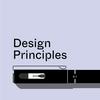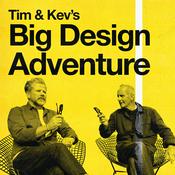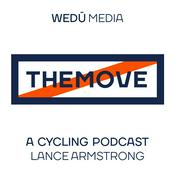34 episodes

A Bit Of This, A Bit Of That: Year-End Design Debrief
09/12/2025 | 44 mins.
Send us a textYear-end is when the honest stuff bubbles up: what we built, what broke, and what we’ll try differently next time. We raise a glass to the community that’s carried this show and jump straight into the craft and chaos of design life—part celebration, part hard-won field notes.We start with the real costs and protections behind small studios: trusts, liability, and why construction firms fold faster than architects who keep overheads lean. From there, the stories turn tactile. A shaky three-storey demo becomes a lesson in salvage economics, where windows and steel pay the bills. Then comes the headline experiment: hydroforming a stainless-steel sauna for a client with six tonnes of water. We break down triple welds, reinforcement, polishing, spray foam to shift the dew point, and smart vent placement so the hottest air stays breathable. It’s a blueprint for making odd ideas safe, efficient, and beautiful.That hands-on build sparks a bigger provocation: what if cladding and structure are the same thing? We connect hydroforming to arches, keystones, and tensioned timber, arguing for performance-led form over decoration. Along the way we tackle the eternal software debate—Revit, Archicad, and the surprising power of simple stacks like Google Forms and Sheets for time, variations, and site workflows. We make the case for physical models that carry the concept from week two to the final pour, and for digital twins that guide renovations, farm fencing plans, and long-term maintenance without drowning in subscriptions.If you’re hungry for design that survives contact with the real world—pricing, risk, salvage, systems—and still leaves room for bold form, this one’s for you. Subscribe, share with a friend who loves building as much as drawing, and drop us a note with the one tool or habit that saved your studio this year.Please Like and Subscribe it really helps :) Follow us on @designpriciplespod on Instagram and if you wish to contact us hit our DMs or our personal pages. We love to hear from you it really encourages us to keep going and the ideas and feedback we get from the listeners is awesome!

Your Beam Is Too Big: Architects & Engineers
12/11/2025 | 57 mins.
Send us a textStart with a flooded hotel room, end with a four‑metre cantilever, and in between unpack the messy, creative space where structure meets form. We sit down with structural engineer Joel Marsh of Pocket to map out how architects and engineers can move beyond transactional deliverables and into a truly design‑led process that saves money, reduces RFIs, and produces cleaner, more elegant buildings.Joel opens the playbook: meet early, sketch by hand at 10–15%, and use those concept drawings to align intent before any modelling lock‑in. From there, general arrangement plans become a shared workspace for spatial fit, and detailed coordination happens before consent so builders aren’t left juggling “garden salad details” on site. We talk real value vs low fees, the hidden cost of conservative members, and why a readable calculation package should tell a story of load paths, stiffness, and performance that architects and builders can follow at a glance.Materials get a clear‑eyed treatment. Timber is brilliant when it fits the constraints; steel and concrete still win in the right places. Joel walks through post‑tensioned slab logic, a prefabricated mountain hut helicoptered into place, and what it took to pull off a four‑metre cantilevered floor. We also touch on AI’s limits: it can automate parts, but it can’t replace the creative judgement that balances cost, constructability, and design intent. The through‑line is respect and shared language—because the best buildings reflect a professional consensus, not a one‑sided mandate.If you care about better drawings, simpler details, fewer RFIs, and a smoother path from concept to construction, this one’s for you. Subscribe, share with your project team, and leave a review to tell us the one collaboration habit you want to see more often.https://pocketeng.co.nz/Please Like and Subscribe it really helps :) Follow us on @designpriciplespod on Instagram and if you wish to contact us hit our DMs or our personal pages. We love to hear from you it really encourages us to keep going and the ideas and feedback we get from the listeners is awesome!

The Narrative Power: Architecture & Film, Take Two
23/10/2025 | 56 mins.
Send us a textWhat if a building could be more than an object on a pedestal and instead feel like a living character on screen? We sit down with two architectural filmmakers, Nikolas Struger from ravens At Odds and Veeral Patel who show how to move beyond glossy hero shots and capture the heartbeat of design: process, people, and emotion. From software and cycling photography to architecture practice and brand strategy, their varied paths lead to the same conclusion—storytelling is the missing bridge between architects, clients, and the public.We unpack the craft behind compelling architectural film, starting with strategy. Short, vertical cutdowns can spark curiosity and build trust, while longer pieces on your site deliver depth and nuance. Preproduction is everything: treatments to align on tone and references, storyboards that map scenes to sun paths and locations, and schedules that protect the moments you can’t fake. On set, preparation meets improvisation as documentary instincts catch the unplanned gestures that make a space feel alive.This conversation goes beyond formats to focus on value. Forget chasing view counts. Strong films create social proof, clarify process, and strengthen pitches by reducing perceived risk. We discuss budget tiers, when to choose interviews over pure visuals, and how music, sound design, or even silence can carry narrative. Nik and Veeral share examples of process-driven edits, client-led arcs, and long-form projects that track a home through years of delays, decisions, and everyday life—proof that architecture resonates most when it reflects human stakes.If you’re tired of slick reels that say little, you’ll find practical guidance on planning light, collaborating with crews, and structuring stories that audiences remember. Subscribe, share with a colleague who needs a narrative upgrade, and leave a review telling us: which project in your world deserves a film—and why?Please Like and Subscribe it really helps :) Follow us on @designpriciplespod on Instagram and if you wish to contact us hit our DMs or our personal pages. We love to hear from you it really encourages us to keep going and the ideas and feedback we get from the listeners is awesome!

Cultivated City: Designed Solutions vs. Organic Growth
01/10/2025 | 55 mins.
Send us a textA city can make you breathe easier—or grind your teeth—before you’ve even named why. We follow that feeling from a flimsy townhouse hinge to the rhythm of a street that forces a ute to crawl, exploring how materials, widths, and mixed uses quietly choreograph daily life. In this episode we pull apart modernism’s big promises, tip our hats to classical street smarts, and ask what a genuinely New Zealand urban vernacular might look like—one with corrugate, brick, and crafted facades that hold up to weather, touch, and time.The heart of the chat is human-scale design. We talk walkability you can feel, where a tight lane and rougher surface set a natural speed limit, and where a dairy under a flat means your day stacks neatly without a dashboard. Medellín’s gondolas and covered escalators show how access can reverse decline when you cut the time penalty for the very people who make a city run. Christchurch’s rebuild sits in the balance: a missed chance for bold spines of transit and tighter hubs, yet proof that even partial wins matter when applied consistently. And yes, fares and parking prices quietly steer behaviour more than slogans ever will.Inside the front door, priorities tell on us. The “double garage with everything” inflates into a third of a house, while the rooms we actually live in shrink. We argue for smaller, better spaces—nooks, ladders, odd corners that make memories—over storage for cars. Materials matter too: brick can beat timber on cost and presence, corrugate deserves a smarter role in city scales, and layered skins can bring the street back to hand-level detail. If there’s a takeaway, it’s this: design works when it speaks plainly to how people move, meet, and make a day. Subscribe, share with a city-loving mate, and tell us—what one change would make your street slower, safer, and more alive?Please Like and Subscribe it really helps :) Follow us on @designpriciplespod on Instagram and if you wish to contact us hit our DMs or our personal pages. We love to hear from you it really encourages us to keep going and the ideas and feedback we get from the listeners is awesome!

Capturing Architecture: Moving Image and Storytelling
18/9/2025 | 50 mins.
Send us a textWhen we consume architecture, which speaks louder - the frozen moment or the flowing narrative? This question sits at the heart of our fascinating conversation with Clare Chapman, editor of Home Magazine, and Simon Devitt, renowned architectural photographer.Despite both guests being masters of still imagery, our discussion reveals how moving image is transforming architectural storytelling in ways that complement rather than replace traditional photography. As Simon eloquently explains, "Video kind of can mimic how the mind maps space, whereas stills can't really do that. But stills hold another power that video can't possibly entertain... allowing the viewer to use their imagination."The conversation weaves through surprising revelations about how we consume architectural media today. While 6-second videos dominate social feeds, Home Magazine readers spend an astonishing 90 minutes with each issue. This paradox highlights our simultaneous hunger for both instant gratification and deep engagement with architectural stories.We explore the power of client perspectives in architectural media, with both guests agreeing these authentic voices often communicate more powerfully than architects themselves. As Clare notes, hearing homeowners discuss their spaces creates "that emotional connection" that's difficult to achieve through professional commentary alone.Perhaps most fascinating is the discussion around authenticity in an age of photorealistic renders. Simon observes that "we are starting to question is that real or is it not?" This has created new value for content that documents genuine, built work across multiple formats - something increasingly important as consumers become more sophisticated in their media consumption.Whether you're an architect seeking better ways to communicate your designs, a media professional navigating changing platforms, or simply someone who appreciates thoughtful discussion about how we experience buildings, this episode offers valuable insights into the evolving language of architectural representation.Subscribe to the Design Principles Pod for more conversations exploring the intersection of design, media, and technology in our built environment.Please Like and Subscribe it really helps :) Follow us on @designpriciplespod on Instagram and if you wish to contact us hit our DMs or our personal pages. We love to hear from you it really encourages us to keep going and the ideas and feedback we get from the listeners is awesome!
More Arts podcasts
Trending Arts podcasts
About Design Principles Pod
Listen to Design Principles Pod, Table Manners with Jessie and Lennie Ware and many other podcasts from around the world with the radio.net app

Get the free radio.net app
- Stations and podcasts to bookmark
- Stream via Wi-Fi or Bluetooth
- Supports Carplay & Android Auto
- Many other app features
Get the free radio.net app
- Stations and podcasts to bookmark
- Stream via Wi-Fi or Bluetooth
- Supports Carplay & Android Auto
- Many other app features


Design Principles Pod
download the app,
start listening.


































